Pass Your Cisco CCT Routing and Switching Certification Easy!
100% Real Cisco CCT Routing and Switching Certification Exams Questions & Answers, Accurate & Verified By IT Experts
Instant Download, Free Fast Updates, 99.6% Pass Rate.

Cisco Certified Technician Routing & Switching (RSTECH)
Includes 67 Questions & Answers
$69.99
Download Free CCT Routing and Switching Practice Test Questions VCE Files
| Exam | Title | Files |
|---|---|---|
Exam 100-490 |
Title Cisco Certified Technician Routing & Switching (RSTECH) |
Files 1 |
Cisco CCT Routing and Switching Certification Exam Dumps & Practice Test Questions
Prepare with top-notch Cisco CCT Routing and Switching certification practice test questions and answers, vce exam dumps, study guide, video training course from ExamCollection. All Cisco CCT Routing and Switching certification exam dumps & practice test questions and answers are uploaded by users who have passed the exam themselves and formatted them into vce file format.
ROUTING AND SWITCHING ESSENTIALS
2. Lab : Basic Switch Configuration
In this practical exercise, we are going to check the basics of switch configuration, and as you can see in the picture, we have two switches connected to each other from their geek zero one ports, and we have six steps to accomplish. Let's go ahead with the first step configureswitch host names I need to launch my packet tracer first, and I'm on my way to my first switch. Madrid will be the first switch host name. To change the host name, I need to go to the configuration mode on the switch, as you remember, and to get to the configuration mode first, I need to go to the privileged exec mode by typing enable. Now that I'm in the privileged exec mode, I can go to the configuration mode form here Ineed to type confd or configure terminal whatever you want I'm currently in configuration mode, changing the host name. My command is "hostname." hostname Madrid, and that's it. Please pay attention to that as soon as I hit enter. Hostname changed okay. Now it's time to go to the second switch and make the same configuration, enabling confi and the hostname, which is going to be Miami for this time all right.We are going great again there's no problem and weaccomplished the first step check time in the second stepconfigure SSH for both switch what our lab is sayingto us and password is going to be removed one. Two. Three's all right. I will return to the packet tracer again and I'm going to configure SSH, but I need to tell you something more before configuration, as you remember. If I want to connect a device remotely I have twooptions to configure first option is telnet and the second oneis SSH telnet is an unsecured protocol and SSH is asecure protocol because SSH is encrypting your session while you areconnecting to the remote device so what we offer always isconnect via SSH instead of talent so we need to configurethe SSH right now so first I'm going into the Madridagain as you can see that I'm still in the configurationmode so I don't need to type enable or configure terminalagain what I'm going to do is just making the SSHconfiguration if you remember from our previous session to set theSSH up first we need to define an IP domain namelet's say that it's going to be network el I setmy domain name first to define SSH then I need togenerate cryptokey I need to use some question marks This guy is not supporting the general keys. Okay? This is a different version Normally, I will type the cryptoGI key. Generate RSA. General keys. Modulus and 1024 command, but the desired version is not letting me type this instead of typing that—it's offering me to type the cryptokey. Generate an RSA when I type enter after this when Ihit the enter it's asking me that how many bits inthe modulus which we are going to use the 1024. Okay, now as you can see, our RSA keys were generated, and the second step is defining the username and password. And let's do it, username. And we have a syslog message in here which says that SSH is enabled, which is the good news, but it's not enough. so we are making our other configurations right now. We are defining a hostname, and I'm sorry, we are defining a username and password right now. Username is Brad, and the password is remote. One, two, three. After this, I need to go to the virtual interface. As you remember, for example, let's say that zero equals 15 and I need to type, transport, input SSH, and login with lockov, and that's it. All right, let's go back to Miami and repeat the process. Let's start by defining a domain name IP, or domain name network. This second step involves generating the RSA case. So crypto key, generate RSA, and I'm hitting Enternote. Now I'm choosing to create a 1024-bit-length key, and my keys were created as you can see. Okay, that's cool. And in the second step I need todefine username and password username bread again. And as you can see, SSH has been enabled, and right now my keys are ready. This means username bread password, mySh password would be Remute. One, two, three—which question do you ask me?—and after I'm going to the virtual interfaces, I need to define that I want to reach these virtual interfaces via SSH using the transport input SSH command and login locally. That's it. You can see that configuring SSH is very simple. We just have a few steps that we need to memorize. First, we need to define a domain name. Second, we need to generate our keys. In the third step, we need to define a user and a password. And in the fourth step, we need to configure the virtual lines. Alright, that's going pretty well for me. And it's time to take a look at the third step. What the third step wants us to do is assign 1041, 24dot, two slashes, 24 for Madrid, and 324 for Miami. Switch. Third step is saying as to definea management IP for both switch. Okay, I know this switch's IPS right now, and it's time to make this configuration. I'm in the config line mode right now and to configurean interface I need to go to the interface mode. But as you can remember from the previous sessions, if I want to define a management IP for the switch, I need to assign the IP to the villa. All right, it's not a physical interface like a router, so I need to first exit. Now it's time to go to the VLANinterface interface we learn and question mark. As you can see, I can use this range and I can use whatever I want, and my management will be 254 this time. As you can see that I'm inthe config interface mode right now. But this is not a physical interface; this is a VLAN interface of the switch. And we are going to talk about VLAN in our next sessions. But please keep in mind that never forget this. If you are configuring a layer twoswitch, you need to assign the IPaddress management IP address under your VLAN. All right, let's configure this IP address. I forgot. All right. I typed my IP address, as you can see. And flash 24 means 255-255-2550, and that's it. Let's go to Miami right now. That's it. As you can see, I made the same configuration for Miami two. What I did was define an IP address, which is given in the question, and I defined the subnet mask also. And that's it. Step three accomplished. Now let's take a look at the fourth step. Four Step is saying to assign 104124 as the default gateway for both surfaces. What I want to say here is that in the question, you cannot see a default gateway right now. Let's do something like that. Let's say that here is the exit point of this network. And as you know, if here is the exit point, So that means that this is the default gateway. So it means that the interface of the router in here will be this IP. But I'm not going to configure the router in this example. So what I need to do is configure the default gateway for metadata in Miami as the IP address of the router's interface. Alright, let's go. I'm at moderate right now. To define and default the gateway, exit. The command is pretty straightforward, as you can see by the IP default gateway, and that's it. IP default gateway and IP address of the default gateway You don't use a subnet mask when you define the default gateway. Please keep in mind that you can face this question on the CCNA exam. Alright? IP default gateway. And that's it. That's it. We are going great, guys. And we accomplished the first step too. And in the last step, the question is telling us to check two outputs: show IP interface brief and show CDP neighbors. We are going to use Madrid for the outputs and use the Show commands. I need to go to the privileged executive, and let's say that shows the IP interface in brief. As you can see that this is a layer twoswitch and physical interfaces don't have an IP address assigned. What I assigned for this switch is a VLAN, and I configured this IP address for this VLAN, as you remember. Okay, I can verify the IP address configuration using theshow IP interface brief command as you can see. And the second step is checking the output for the Show CDP Neighbors command. So what I'm expecting to see are the details of the directly connected neighbor. So in this example, a directly connected neighbour of Madrid is Miami. So I need to expect to see the details of the Miami Show, CDP, neighbors, and voila. That device ID, as you can see, is miami. My neighbour is Miami. That means a local interface is my interface. I'm connected via myk one two.This is the remote device's interface to Miami's one. And Miami is a 29–60 switch.
3. Lab : Basic Switch Port Configuration
In this practical session, we'll check the switchport configuration together. We have two switches, again, which are Madrid and Miami, and we have six steps to accomplish. This is going to be a really fantastic session, guys, and we are going to learn lots of things and make a great configuration together. And let's go with the first step. The first step is saying as to configure portsbetween fastest two fast internet 00:24 as access port. Alright, let's do it. What I need to do is first I need toset the host name this is Madrid and what questions saying in the first step is configuring the ports betweenfestival zero two festive 1024 as access port. Okay, let's go interface with fast Ethernet. Should I Pinterest breathe after being unveiled? Okay, this guy is starting from page one, as you see. Then I'll begin configuring the festival configuration mode interface (fast Ethernet one), switchboard mode axis. This is when you are in interface mode, and when you are going to configure another interface, you don't need to do this; you can do it, but you don't need to do it if you're in interface mode. You can go to another interface by typing interface fast Ethernet, the same command. Okay, you could do by typing exit and this commandagain but you don't really need to okay, what I'mgonna do is switch port mod access to define anaccess port I'm using the switch port mode access modeaccess command as you will remember from our sessions. Then I need to go to the interface fast Ethernet two and switch port mode access, and I need to go to the festoon four Oh come on, guy, are you kidding me? Am I going to configure the whole thing step by step, one by one? Are you killing us? Actually no. You don't need to do this if you want to configure a range We have an interface range command to make a configuration between an interface range, so you don't need to configure one by 124 ports, and what we're going to do is select a range right now and make the configuration for the whole range. Our configuration will affect the whole range. That's a great feature for the interface range, fastethernet, and starting from zero, right? And I will go until 24; please pay attention to how I'm defining this here. That's important. I need to put a space, a dash, and one more space, pretty cool, and enter 24 as you can see that I'm in the configuration if range mode instead of the configuration if mode. This mod means that you are in a range, you choose the range, and your configuration will affect all the ports in this range. So what I need to type switchport mod access" and "enter." That's it. You don't need to configure the whole thing. You don't need to configure them one by one. What you need to do is just configure a range. All right, configure ports between this and 1224 as access. Whoa. Accomplished. Pretty cool. Let's get into the second step. Configure gig one port as trunk. But first I need to verify my last configuration. What I'm going to do is type the show runningconfig command and check one: switch port mode access. Pretty cool. Two access. Three are: access, access, and access. Pretty cool. You can see that range is working. Now I need to go to the gigwhoops interface, gig one, and switchport trunk. No switchport mode. Why? I type this first. Some iOS devices require you to first select the encapsulation type. And you need to type "switchportrank encapsulation rank" first. But in some other iOS you don't need this. That's why I typed this. But I saw that we don't need this. So what we're going to do for trunk configuration is just to type switch port mode trunk on Madrid. And we need to do the same configuration in Miami for the hostname first. Hostname Miami. Okay, I'll do interface range zero-one to 24 and switch port mode access and exitinterface kick one and switch port mode trunk. Pretty cool. Pretty cool. It's pretty cool and pretty easy. Second step accomplished. As you can see, there is nothing to be scared about. These commands are pretty straightforward. But what I'm offering you to do is make this lab on your own packet.Tracer, please, and implement the commands yourself one more time. Okay, now let's go to the third step. Create willops I'm sorry, create villains three, four, and five. and their names will be phone, video, and wire. Yes, I'm in configuration mode right now, and I should be in configuration mode to define new VLANs. Okay, do you remember how we define the villains? I'm going to show you that villain three.Why do I type three? Because question saying is that to create VLAN three, fourand five and the command is VLAN space VLAN name. This time my villain villain number. I'm sorry. Villain space, villain number Villain three. And the villain's name will be Let's check it out. Villain name, form Okay, VLAN four. This time, four will be video name video.And I need to define a villain-five, whose name will be wireless. Pretty straightforward. You can see that it's very, very easy to define Vlanz on the switch. Okay, I defined my Vlanz, but I need to verify it. To verify this, I need to issue the show VLAN connect show villain command. Okay, we have Villen three, four, and five, and their names are phone, video, and wireless. But please pay attention that there are noports assigned to these villains right now. All ports are in the default VLAN, which is VLAN one right now. Okay, I made the villains as well, and I finished this step, so I'm in; assign fastest enough zero three to villain 30, four to VLAN 4, and five to villain 5. Now I'm going to assign the porch. As you can see that three, four and fivefacetune at three, four and five are in thevillain one, which is the default villain. Right now, what I'm going to do is take this and assign it to the phone villain. I'm going to take this and assign it to the video. And I'm going to take this and assign this port to the wireless VLAN. Alright, let's go. Configure terminal. If you want to make a change to an interface, you need to go to the interface mode. Interface. Face Ethernet zero three. If I want to assign a port to a villain, my comment is: switch port access VLAN and VLAN number. I'm in festival three, and the question says to assign this to VLAN three, switchport access VLAN three, and that's it. Let's go to the four. This is going to be switch-port access. VLAN four and five will be VLAN five. Okay, pretty cool. And I need to take a look at the show's villain again. I need to verify my configuration. Show villain. All right, that's what I completely want to see. As you can see that fast iterance three is in villain30 four in Villan four and five in villain five. Here is the good news. The fourth step is okay right now too. Alright. In the fifth step, let's say shut down these parts. So I need to shut down faces 90678, 910, and eleven. I'm going into configuration mode again. zero (6211 and shutdown. All right, great. As you can see, my ports changed their state to administratively down, which I configured. And as you can see, I used the range command again to accomplish this call. Pretty cool. And in the next step, configure port security on Face Ethernet at 00:12 and limit portwill to only five Mac addresses. If a violation occurs, ports will shut down. Okay, let me make some explanations first. In Madrid's. Fast. Twelve. Port. Let's say that we have a Hub device. We have five PCs connected to the hub device, and someone comes in and tries to plug in his cable as the sixth Mac address. What I'm going to do is, if this guy comes here, I will shut down the fast Ethernet completely. Okay? Let's go interfacing fast Ethernet first. Please remember that if I want to configure the port security, the first step is configuring the port. The first step is enabling port security globally under interface mode. First, switch port security on and enter. Then I need to define the maximum Mac addresses that I'm going to accept from that port with switch port security. Oh, what's going on here? Maximum command, maximum port security, and Question wants me to shut down the port as the final step. Switch port security if this 6th guy comes in, and I need to defend my violation, which will be shut down for this example violation. And as you're going to remember, we have three violation modes. We have projects, restrictions, and shutdowns. And for this example, I'm going to use the shutdown. Okay, I'm in my configuration, and Fastinternet 00:12 will accept just five PCs. And if a sixth PC tries to come via hub to our port, the port will shut down itself. And yes, we finished our configuration lab. Thanks for viewing. That was a really, really cool session, and I'll see you in the next day. Thank you.
4. VLAN
In this section, we are going to talk about VLANs. On the first day of my networking classes, it was difficult to understand why we used VLAN. But after day by day it was easier to get it. Generally, we are making virtual local area networks on the same switch and making them communicate. The main reason we are using Vlens is to separate the broadcast traffic. As you know, on a local network,broadcasts are not forwarded over a router. But if you use VLAN, you don't need a router to eliminate the broadcast traffic. You can use VLAN on the same switchand broadcast traffic is not forwarded between thatvillains each villain has on its broadcast traffic. Villains are not used on plug and play, which is the dummy switch. And please keep in mind that different VLANs cannot communicate with each other without a layer 3 device such as a router or firewall maybe.Let's take a look at VLAN communication. Here we have a layer to switch, as you can see, and we had two different villains. And we have PC. One, two, three and four. In here. Face Determine One and Face Determine Two can communicate with each other because they are on the same VLAN. Face three and Facetoet Four also which are PC Three and PC Four can communicate each other becausethey are on the same villain too. But Face Determine One cannot communicate with Face Determine Three and Face Determine Four because they are on different wheel ends. If you want to establish a connection between fastware1 and layers three and four, we need to use a layer-three device such as a router or maybe a firewall or something like that. Let's take a look at the benefits of VLAN. VLANs provide the following benefits. The first benefit is security. Separating systems that have sensitive data from the rest of the network decreases the chances that people will gain access to the information they are not authorised to see. The second benefit is logical grouping. When users on a villain move to a new physical location but continue to perform the same job function, the end station for those users does not need to be reconfigured. Similarly, if users change their job functions, they need not physically move. Changing the villa membership of the end station to that of the new team makes the users and stations local to the resources of the new team. The third benefit is that VLANs reduce the need for routers. They reduce the need to have routers deployed on a network to contain broadcast traffic. The floating of a packet is limited to the switch ports that belong to that villain. The fourth benefit of the villain is the reduction of network traffic. By combining the broadcast domains, stations on the villain are prevented from listening to or receiving broadcasts not intended for them. Moreover, if a router is not connected between theVLANs, the end stations of a VLAN cannot communicatewith the end stations of the other villain. Let's talk about the VLAN types. Now we have six types of VLAN. The first type is the default villain. This is basically where all ports belong by default, guys. This is technically VLAN 1, and it can't be deleted from the switch. The second thing is that the second type of villains are data villains. This is the normal situation, where the traffic is carried and the client data goes through the local network. The third is the voice villain. The voice villains are configured to carry the voice traffic. The fourth is the management villain. This VLAN is used on a different network for management purposes. The fifth is the native Willan. The native willan is a oneque only conceptterrific belonging to native wilderness is not tagged. Note that by default, Van is the nominative villain on all Cisco Catalyst switches. You can designate any villains or your own native villain on your switch. And note that it needs to match on both ends of the trunk connection. The last villain type we are going to focus on is the resort villain. There are some villains that are reserved internally on your switch in order to use them in other environments like FDDI, Tuckering, and something like that. The specific villains used for these two types of networks are between 1002 and one five.Let's take a look at the voice villain operation. Now, it is always recommended to separate data and voice traffic. And most of the time we are using a separate villain to carry voice traffic. Usually IP phones sit next to a computer on the same desk, guys. They require the same UTP cables as computers and also use Ethernet. This will work, but it has some disadvantages. You need to install a new cable from the switch port to the IP phone. Or maybe you will lose a switch port for the IP phone. To solve this, most IP phones, including Cisco's, have a three-port switch inside the IP phone. One port connects to the switch, one port connects tothe computer, one internal port connects to the phone. This allows us to connect the IP phone and computer, like you see on the screen right now. As you can see in here we have a switch andwe have an IP phone and we have a PC. In here, we have just one cable coming to our IP phone, and our IP phone has two different ports. One of them are locally network port,the other port is the PC port. We are terminating the cable coming from the switch on the local network port, and we are terminating the cable coming from the PC on our PC port of the IP phone. And then, in here, we have also got two different VLANs. We have VLAN 10 to carry the data of the PC, and we have also got VLAN 30 to carry the voice traffic coming from the IP phone to the switch. And here is the configuration. We are entering the interface mode by typing "Interface" and determining 00:16 for this configuration. Then, to define a data villain, we are typing switch port access VLAN and the VLAN number. This is the access VLAN, and we are also defining a voice VLAN, as you can see. And the command is switchboard voice VLAN and the VLAN number, which is unfortunate in this case. Let's take it to the villain trunking.Now we have two modes of switchports, and they are access or trunk. An access port can carry a single villain; however, trunk ports carry multiple villains between VLMS. Each frame sets the villain's information, and that is known as "tagging two." For example, here we need to define the gigabit port as an access port. We need to define the gig two as access port. We need to define Gig 1 and Gig 2 of the civic tools as access ports. But we need to define these guys—three guys—as a trunk port because we are going to carry two different villains, which are villain 100 and villain 200. For this example, let's go ahead with the villain. Tagging trunks are used to carry traffic that belongs to multiple villains between devices. Over the same link, a device can determine to which villain the traffic belongs by looking at its villain identifier. The villain identifier is a tag that is encapsulated with the data. ISL and Q are two types of encapsulation that are used to carry data from multiple sources over trunk links ISL.This guy is a safety-related proprietary protocol for the interconnection of multiple suites and the maintenance of villain information as traffic goes between suites. And that, my friend, is the standard for taking pictures on a trunk. Let's go ahead with implementing villains and VLAN security. We have different villain ranges for different purposes. The villains Zero and 495 are used for system use only, and they are researched. Villain Van is the default villain. As you know, villains between two andone are used for the Ethernet VLANs. VLANs between 1002 and 1005 are used for Cisco defaults for FDI and the token ring, and VLANs between 2025 and 2094 are the extended range VLANs, and they are used for Ethernet VLAN only. Let's take a look at the VLAN configuration. Now, configuring VLAN is relatively simple. On the configuration mode, we are typing VLAN, and we are defining a villain number in here. On the speech one, As you can see, we are using two villains, villain 100 and Villa 200. And by typing Villain and the Villain number, weare getting into the V config Villa mode. On the WLAN mode configuration, we can name our villains, as you can see which is here and which is HR 4 for VLAN 200. After opening our VLANs and configuring them globally, we are getting into interface mode. For example, for interface Gigabit, we are defining the switch port mode as Access because that's carrying just one villain. Then we assign our switchport to the associated villain. As you can see, the same thing happened here. Also, let's take a look at the trunk configuration. On gig three, we are going to make a trunk configuration because I'm going to carry multiple villains' information from here, which are villains 102 hundred. To define and trunk, we configure switchport trunk and type the encapsulation type, which is dot one Q in this case. Then, instead of access, we type switch port mode trunk, and we type the switchport trunk allowed and the villain numbers that we allow to go from that trunk. Let's take a look at the dynamic ranking protocol, DTP. Now, DTP is a Cisco proprietary protocol that is used to automatically negotiate ranks between Cisco switches using the dynamic tranquilly protocol. DTP can be used to negotiate and form trunk connections between Cisco switches dynamically. Dynamic trunk protocol can operate in different trunk modes, as shown in the graphic. If you want to create a trunk link between two suites, you should use, for example, Trunk and Trunk on both ends. You can use Trunk, and you can also use Trunk and Decorable. You can also use Ultra and Trunk, and at the desertible, we can use Decorable with the trunk. Also, as you can see here, one side is configured as switchboard mode, dynamically decoratable, and the other side is auto. And as I showed you on the previous slide, Decorable and Auto are forming a trunk link. But in here, we are defining auto on both ends, but we cannot perform a trunk link. To verify our trunk ports, we are using show interfaces and trunk commands, and we can see the trunk ports that are making an actual ranking at that moment. Show interfaces, interface names, and the switchboard is another command for verifying. We can see if the administrative or operational modes are trunked or not. Let's take a look at the common VLAN attack types. A switch interface that is connected to an end device—a computer, maybe, or a printer—is normally in access mode, and that end device will have to gain access to its own villain. Traffic from the other villains is not forwarded via that interface, as you know. Consider a situation where an attacker is connected to a switch interface that is configured with either dynamic decisionable, dynamic alto, or trunk modes. If the attacker can generate DTP messages from his computer, a trunk link can be formed between his computer and the switch. Another method of switch spoofing is by connecting a rock switch to an interface configured with dynamic distributed dynamic auto or trunk mode. Let's take a look at the double tagging attack. Lastly, double-tagging and wheel-hopping attacks take advantage of one-Q and one-Q tagging and tag removal processes for many types of sweets. Many switches remove only the one Q tag. In a double-taking attack, an attacker changed the original frame to add two villain tags. an outer tag, which is of his own villain, and an inner, hidden tag of the victim's villain. Here the other species must blend with the net villain of the trunk link. one inning when the double tag frame reaches the switch In this example, the switch can only see the outer villain of the interface, which really belongs to the switch. Switch One will now remove the outer villain tag and forward all the ports to the native VLAN. And in this example, that is VLAN One. One copy of that frame is forwarded to the trunklink to reach the next switch, which is switched to. When the frame reaches the switch to it willopen the frame to see the second tag. Switch two will now assume that the frame blanks are for Villa 100 and will forward to it.
5. Routing Basics
In this section, we are going to talk about routing basics. Let's start with the routing basics: what is a router? A router is a networking device that forwards data packets between different networks. The main job of the router is performing IP routing based on the routing table, and the routing table can be established by manually configured static routes or dynamic routing protocols. This is the router. This guy has a routing table in it, and the main function of this guy is making IP routing based on the routing table. Let's go ahead with the router. In a router, we have components such as iOS, which is the operating system of the device, and some hardware, such as the CPU, memory, and storage such as Flash RAM, Roam, and the Envy RAM. As we talked about before, the main purpose of a router is to connect different networks. In here, you can see two different routers, which are router A and router B. These guys are used for providing communication between two remote networks, and they are the 10 network and the 30 network. For this example, let's go ahead with the basic router configuration. When we are configuring a router, first we can configure a hostname. Secondly, we should secure our Enable Mode console port and VT ports to provide secure access. To configure a hostname on a router, our command is hostname, and we are typing hostname and the hostname that we want to define. And, as you can see, the hostname changes to MyRoad as soon as we press the enter key. Then we are defining an enablescript passwordas you can see enable Secret andwe are defining a password in here. After we are securing access to our console portby typing Line Console zero and in the configlinemode we are defining a password again. After we define a password for line VCY access ports, which are the ports used for the remote access, Then we are defining a remote access method, which is SSH secure, as you know. Then we type in the password and our VCY access password. As you can see here, to configure an IPv4 address on a router interface, we are getting into interface mode and typing the IP address we want to use and the subnetmask command. As router interfaces are not activated by default, they must be activated by the Noshot command. As you can see, we are getting into interface mode again, as you can see, to assign an IP address to our router interface. The command is IP Address, and the IP address we want to use is the "summer mask" we want to use. Let's go ahead with the IP version six interface registration. If we want to activate IP Version 6 on a router, first we should enable it by typing the IPV6 unique routing command. To configure an IP version six address on a router interface, we are getting into the interface mode (as you can see again) and typing the IPV six address and the IPV six IP address and the perfect length that we want to use. Then there's the plus snow shot. Let's go ahead with the router's loopecinterface In a Cisco, a loopagg interface is a logical virtual interface. Rather, a loopback interface is not a physical interface like a fast Ethernet interface or a gigabit Ethernet interface. A looped interface has many user guides, for example, the IP address of a loopdeck interface determines, for example, an OSPF routerID, and it also allows BGP neighbourhood between two routers and so on. A loopback interface is always available, guys. Don't forget it. So you don't need to use the noshot command for a loopback interface to define a loopback interface IP address; we are getting into interface mode again by typing interface loopback and the loopback number we want to configure; then the configuration is the same as with the other guys. So let's look at how we can filter our Show commands. To filter our Show commands, we have four options, which include exclude, begin, and the section guides for filtering Show command output so that it only displays lines that contain a particular regular expression. In executive, we can use the Show pipe include command. Here, as you can see, we are typing "Showprocess CPU pipe includes IP input," and we are seeing the line that includes the IP input keyword, right? Exclude filters show command output so that it excludes lines that contain a particular regular expression. So in here, we are typing the Show IP interface brief. This time, we are excluding the unassigned lines. So in here we don't see any keywords like "unassigned," as you can see. Then, to begin the output of any Show command from a specified string, we can use Show (for example, "Show") and the command pipe begin. In here, we are seeing the lines beginning with the line VTV. As you can see, lines VT are 4 and 515, and lastly, to filter the output of a short command to match a due and an expression as well as any lines associated with that expression, we can use the Show command and this section in here as an example ShowRam pipe section rather JRP shows us the specific JRP configurations made on our router. We can use showrun pipe sections, showrun pipe sections PGP, or short run pipe sections crypto, for example, and only see these specific configurations for those technologies. Let's go ahead with the routing decisions for packets travelling on a routed network in here, guys. We have two clients, and they are James and Johnny. If James wants to send a packet to John, the first packet will be sent to the default gateway guys. Why? Because here we are using 10 and here we are using 30 as a network ID. So here and here have different network IDs, so because of this, James will forward the packet to the default gateway, which is here. Then Router A will take the packet and check the destination IP address. To forward the packet to Router B, we should tell Router A about the 30 network. For this purpose, we can use the dynamic routing protocol or study routing by saying that, "Hey, Router A, if you have a packet with a destination of 30 networks, send it to two IP addresses, then the packet reaches Router B." Router B is directly connected to this local network and will forward the packet to Johnny in here, as you can see. Then the packet is read to Johnny, and Johnny can send a reply back to John. Okay, so we should do the same thing on Router B, saying that, "Hey, Robert B, if you want to reach the 10 network, send your packets to one IP address." Let's go ahead with the Pacific selection. If you want to establish a routing between two sites, we have two options: static and dynamic routing. If we are using a dynamic routing protocol and the administrative distance and perfect length values are the same for different protocols, the protocol with the lowest metric is always preferred if the metrics are equal toRoutters make load balancing between different paths.Metrics are the cost values used by riders to determine the best route to a destination network. Several factors help a dynamic riding protocol determine which is the preferred or shortest path to a particular destination. Metric is calculated differently for each dynamic writing protocol andthe metric is for example, if you are using aRip protocol, your metric will be the hope cons. If you are using OSPF, your metric will be a cost value, which is dependent on the bandwidth. Administrative distance is a value that routers use in order to select the best path. When there are two or more different routes to the same destination from two different protocols, administrative distance comes to affect the reliability of a routing protocol and is a numeric value that can range from zero to 255 255.A trusts a smaller administrative distance more; thus, under the same conditions, the best administrative distance is zero and the worst is 255. For example, internal IGP routes are preferred over OSPF because they have a lower administrative distance. Let's go ahead with the router operation, and we are starting with static routing. Static routing is a form of routing that occurs when a router uses a manually configured routing entry rather than information from dynamic routing traffic. Unlike dynamic routing, static routes are fixed and do not change if the network is changed or reconfigured. This kind of static routing is more suitable for very small networks only.So, let's look at an IPV4 static routing example in Rodrigue, where we're creating an example static route configuration to configure a static route for the router A in this network. As I told you on the previous slide, if Router A gets a packet with a destination of 30 networks, we should teach this guy how to reach this particular destination. So the configuration in here is an IP route—the network that we want to reach with its southern mask. And the next up, this command is saying to Rodger A, "Hey Rodrig." If you get a packet destined for 30 with this subnet mask, send the packet to two two, which is this interface of the router B. So let's take a look at the IP version six static routing example. That's the same logic, but what we are doing first is enabling the IP version 6 routing by typing the IP version 6 UniQuest routing command. Then we have a bunch of routes in here, and we are defining the IP version six route commands and the destination networks and the next hops, which are here. This time, let's go ahead with the IPV 4 default static routing example Static routing can be used to define an exit point from a router when no other routes are available or necessary. This is known as a default route, and it means sending everything to a single exit point, which in this case is two. For example, what we are saying to Router A in here is, "Router A, send every packet that you reach." This means every packet that reaches theRouter A send everything to that too. So whatever the packet, every packet that comes to the RouterA will be forwarded to the two IP addresses. And it's the same thing for the IP version six default static routing again, but the command is IP version six unicast routing that we need to implement first, as you know. Then we type the IP version sixrods followed by a double column zero, which is the same as an I zero, indicating that everything will be forwarded to this interface design. Let's go ahead with the floating static routes. Floating static routes are the routes used for creating a backup path. In this method, you define a higher administrativedistance for backup path, and so that routeis not available in normal conditions. The floating static route will only be active when the primary rod fails. For example, in this case, we have a router called Router 1, and we have two static routes, or two static default routes, configured for this router. And in the first route, we are forwarding our packets zero two," I'm sorry, "10230," which is here. So the packets coming to this guy are always forwarded to here always.But we have another rod in here, as you can see, which is forwarding the packet to 10220-2, which is here. So if this rod fails, this route will get into play, and our packets will be forwarded to here. Let's go ahead and do the route summarization. Route summarization, also called Rod aggregation, is a method of minimising the number of routing tables in an IP network. It works by consolidating the selected multiple-rod advertisement into a single-rod advertisement. It contrasts with flat routing, in which every routing table contains a unique entry for each one. In here, as you can see, router one willrepresent four separate networks using a single network. In this case, we have 1020, 216, ten, two 30 00:16, 1020 16, and 10210 00:16, and we're using a summary route, 10200 00:14, and we're representing all four networks with a single network. Let's go ahead with the CIDR-classless interdomain routing. CIDR is a way to allow more flexible allocation of IP addresses than was possible with the original system of IP address classes. As a result, the number of available Internet addresses was greatly increased, which, along with the widespread use of network address translation nets, has significantly extended the useful life of the IPV four.And CIDR uses the real SM to summarise tables in routers for more general addresses. Let's go ahead with dynamic routing. Static routing groups allow routing tables in specific routers to be set up by the network administrator. Dynamic routing uses routing protocols that dynamically discover network destinations and how to reach them. Dynamic routing allows routing tables in routers to change. If a router on the route goes down or if a network is added to dynamic routing, routing protocols running in the routers continuously exchange network status updates with each other as broadcasts or the multist.With the help of routing updates messages sent by the routing protocols, routers can continuously update the routing table whenever a network topology change occurs. Examples of routing protocols are RIP, EIGRP, and OSPF. Maybe so. The dynamic routing protocols that we can use in an IP version for the environment are, as I told you, REIGRP, OSPF plus ISIS, and PGP. The dynamic writing protocols that we can use in an IP version six environment are RIPE EIGRP 4 IPV, six OSPF version 3, and the multiprotocol BGP 4.
ExamCollection provides the complete prep materials in vce files format which include Cisco CCT Routing and Switching certification exam dumps, practice test questions and answers, video training course and study guide which help the exam candidates to pass the exams quickly. Fast updates to Cisco CCT Routing and Switching certification exam dumps, practice test questions and accurate answers vce verified by industry experts are taken from the latest pool of questions.
Cisco CCT Routing and Switching Video Courses
Top Cisco Certification Exams
- 200-301
- 350-401
- 300-410
- 350-701
- 350-601
- 300-715
- 300-420
- 350-801
- 350-501
- 200-201
- 200-901
- 300-710
- 300-620
- 300-415
- 300-430
- 350-901
- 300-425
- 400-007
- 820-605
- 300-730
- 500-220
- 700-750
- 700-250
- 300-810
- 300-815
- 300-435
- 350-201
- 300-610
- 300-820
- 300-510
- 700-150
- 300-615
- 500-470
- 300-630
- 700-805
- 300-720
- 500-560
- 300-515
- 500-442
- 300-535
- 300-910
- 100-490
- 300-215
- 500-444
- 300-735
- 500-052
- 700-240
- 300-835
- 300-635
- 010-151
- 500-443
- 500-490
- 700-245
- 300-725
Site Search:







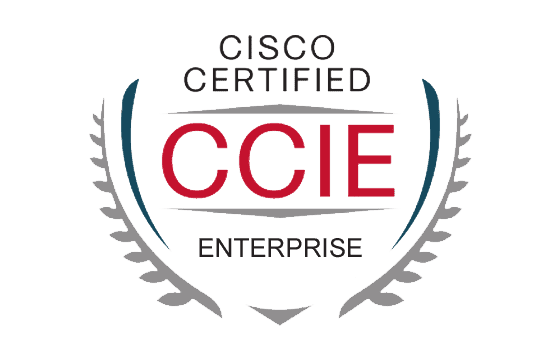

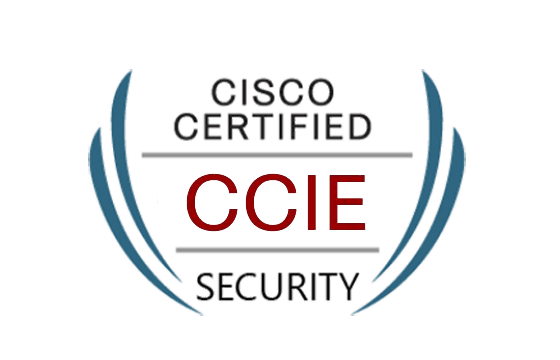
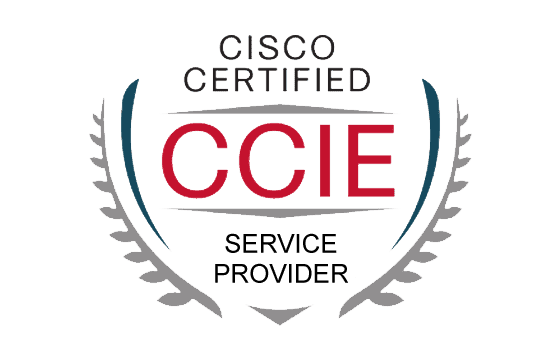

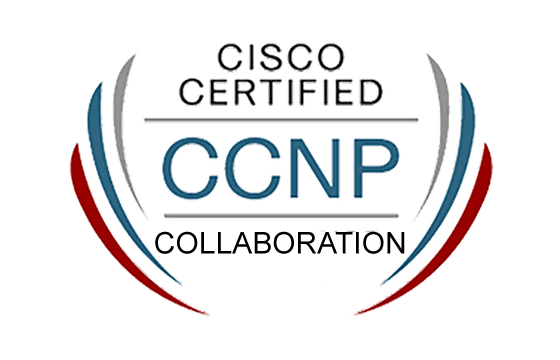
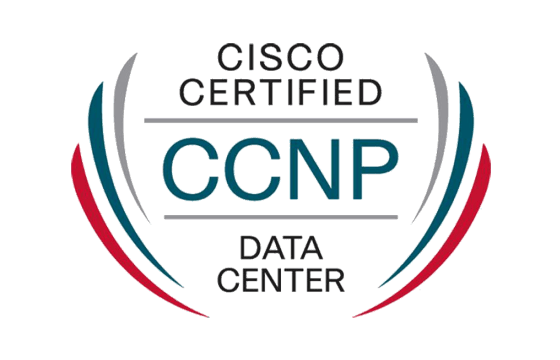
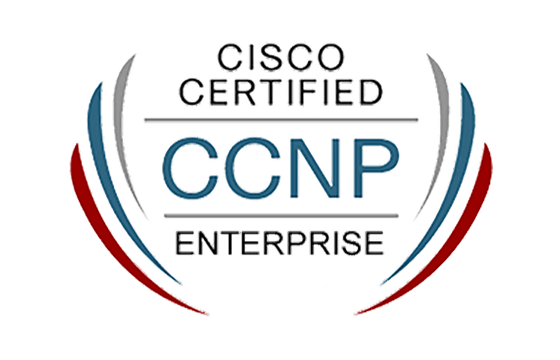
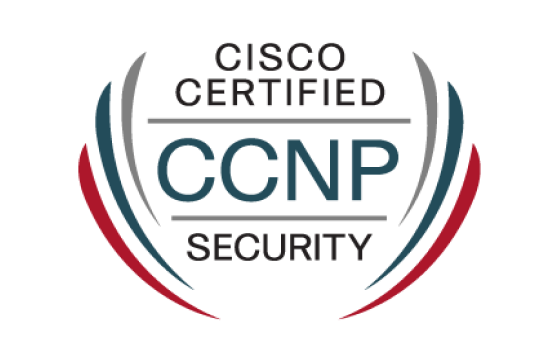
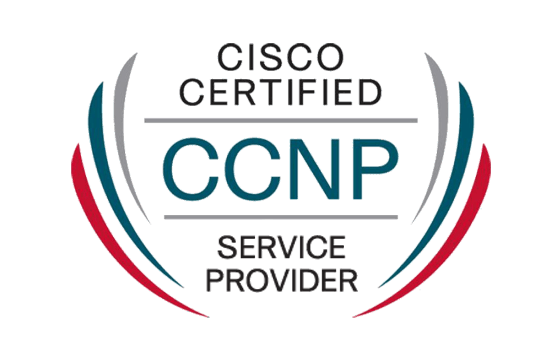



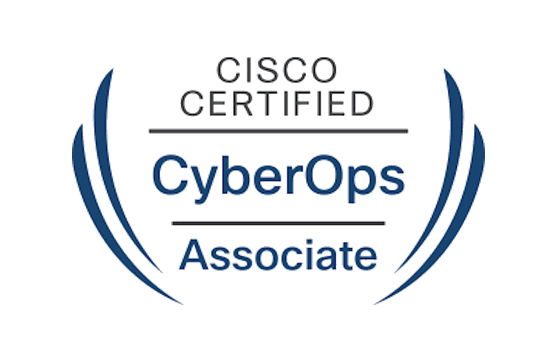





Add Comment
Feel Free to Post Your Comments About EamCollection VCE Files which Include Cisco CCT Routing and Switching Certification Exam Dumps, Practice Test Questions & Answers.